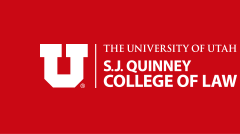Author ORCID Identifier
https://orcid.org/0000-0002-7899-3060
Document Type
Article
Publication Date
8-2020
Abstract
Two competing and linked sets of goals must be addressed when considering patent policy in response to a public health emergency. First is the allocation of existing resources among potential users (hospitals, patients, etc.); second is the creation of new technologies over time (innovation). Patents provide financial incentives to develop new technologies. Yet shortages of patented products often plague crisis response. In the case of COVID-19, allocative goals, particularly satisfying demand for patented medical products (e.g., vaccines, ventilators, PPE, and test kits), may be achieved through governmental interventions such as march-in and governmental use rights (compulsory licensing). But in cases involving the development of new technologies such as vaccines and therapies, incentive structures must be preserved to ensure that the private sector is appropriately motivated to act. In addition to patents, which reward inventors for financially successful innovations, a range of other incentives such as prizes, grants, and subsidies also exist to motivate technological innovation. Incentives like these, coupled with a requirement that resulting discoveries be made available on a broad and open basis, can achieve a balance between allocation and innovation goals. Governments can encourage such measures using both the incipient threat of compulsory licensing and the reward of procurement preferences and other up-front rewards.
This paper was prepared as part of Assessing Legal Responses to COVID-19, a comprehensive report published by Public Health Law Watch in partnership with the de Beaumont Foundation and the American Public Health Association.
Recommended Citation
Burris, S., de Guia, S., Gable, L., Levin, D.E., Parmet, W.E., Terry, N.P. (Eds.) (2020). Assessing Legal Responses to COVID-19. Boston: Public Health Law Watch

